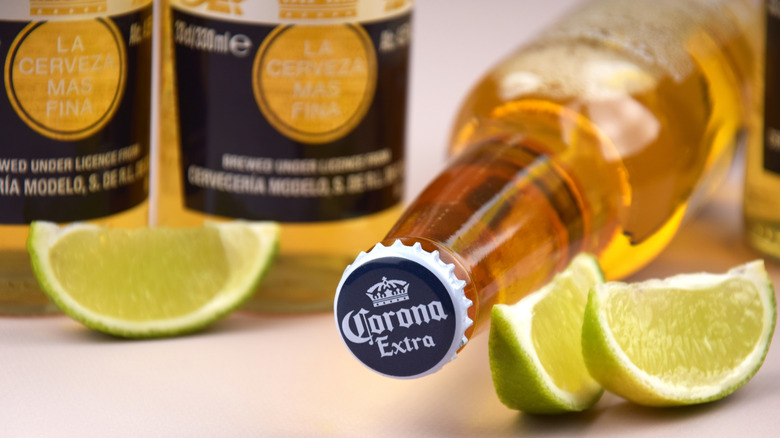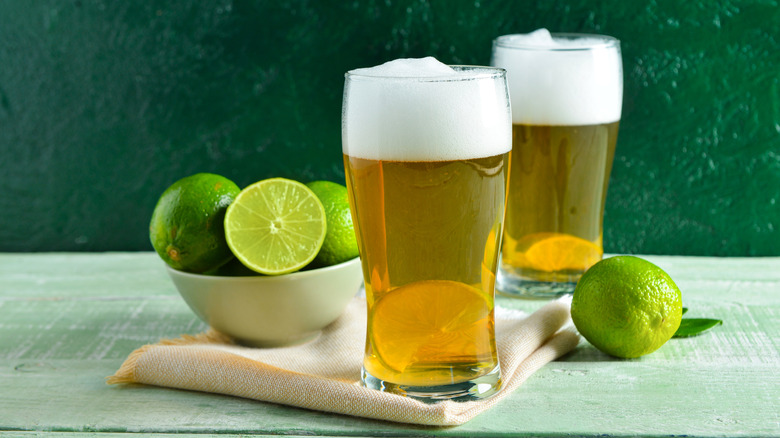What's The Reason Mexican Beer Is Served With A Lime?
While most beers are consumed standalone, there's nothing wrong with mixing in an ingredient. In fact, one of the best tips for making cheap beer taste better is adding a simple flavored twist. And there's no better known example than the trusty combo of Mexican lager and lime. The pairing brings to mind breezy images of hot days and the sound of the waves, and there's an undeniable magic to the mingling of flavors.
The tart citrus delectably complements the ultra-crisp flavors of the Mexican beer. Uniquely brewed with corn, these lagers turn out low on bitterness and very clear, making them a good canvas for a tinge of fruit. Yet this still begs the question: How did the pair become so strongly intertwined?
Well, as is often the case with the history of booze, there are many dueling theories. Some suggest that the lime started as a disinfectant. People claim the acidity eases worries of unwanted contamination, and some go as far as claiming the lime repels bugs. Others believe it grew out of the practice of using a lime wedge to wipe rust from the bottle mouth. As for how the combination rose to prevalence in specifically in the United States, the most prominent theory comes from Martin Lindstrom in his 2008 book "Buyology: Truth and Lies About Why We Buy." Lindstrom posits that a crafty bartender combined Corona and lime as a marketing move in the 1980s, which eventually helped popularize the Mexican lager in the United States.
Mexican beer and lime may have started as a marketing trend
Although Mexican beers (especially corn-based lagers) have become a craft subgenre in their own right, when the lime pairing came about, the selection was much more limited. So, the habit of pairing Mexican beer and lime may have started off with a few brands, Corona, but also Pacifico and Sol. All three are clear, corn-based lagers, and Corona especially is the kind of brew that benefits from a squeeze of lime.
After all, as a mass-produced beer, many find its palate unremarkable, with a skunky flavor an often perceived tasting note. The reason for this is the beer's transparent bottles, as prolonged reactions with sunlight lead to the off-taste. So even if it's not the main impetus for the citrus addition, it certainly explains why drinkers would look to modify the drink.
Then there's the accessible abundance of limes in Mexico. Combined with the widespread tradition of using beer for a chelada or michelada, and the concept of matching a brew with citrus is logical. Some suggest this discovery actually occurred in California in 1981, perhaps as a fun trick. Of course, it's also possible the genesis took place in Mexico. Regardless, what's clear is the combo's a hit: The move became a marketable sensation across the United States. Adopted into advertising by Corona itself, it's likely to assume the citrus aided in the brand's worldwide commercial success.

